‘Our goal’, Ronald D. Moore wrote in the mission statement for his Battlestar Galactica (Universal 2004-9), ‘is nothing else than the reinvention of the science fiction television series’ and so did they all those involved in the production of one of the most important American television dramas. A radical rewriting of ABC’s original series from 1978, Moore’s work has now achieved cult status and it was not surprising that news of the production of yet another reboot by Peacock with Sam Esmail in charge received very mixed responses. At a moment between its past and future models, the recent release of the entire series on BBC iPlayer provides the opportunity to re-watch and reflect on its legacy.
A ‘space opera without the opera’, BSG was set in a galaxy so far, far away and in a time so long ahead that its human colonists were not even sure if Earth really exists or if it is a myth in their Scriptures. This ‘naturalistic science fiction’ started with the return of the Cylons, human-made machines designed to be slaves, who rebelled against their creators and disappeared for 40 years. Having evolved to look like humans, the androids infiltrate the colonies and launch a sneak attack that annihilates almost the entire human race. The series then follows the remaining human survivors on their quest to find Earth as their fleet is being pursued by the Cylons. During its four-season run, BSG explored themes such as survivor guilt and recovery, diaspora and homecoming, betrayal and faith, with a subtlety and sophistication that had been rare in the SF series until then. The series slowly and gradually dismantled the boundaries between human and Cylon by staging various conflicts and alliances between and within both groups with a unique nuance. There were no heroes or villains in BSG – each character was a bit of both.

Fig. 1: Two tribes, one memorial
But this was only one of the many virtues of the show and the following notes may be useful, I hope, in appreciating not only the series itself but also how much and in what ways television has changed within just about a decade or so.
There’s quite a lot of it … Like its contemporary Lost (ABC, 2004-10), BSG found itself at the cusp of a paradigm shift in television programming. Both series aspired to reach the production standards and narrative complexity now associated with what is described as ‘quality television’, while still adhering to the 20-23-episode-per-season model of the previous generation. As a result, both series suffer from uneven subplots, weaker episodes, gaps in the storyline (and, in the case of Lost, several delays and repeats that caused a lot of fan frustration). In the current television landscape, where seasons tend to include 8-13 episodes, BSG’s 20-episode seasons may seem overwhelmingly long. Having said that, so much plot makes the journey even more epic.
….and it’s a slow burner, perhaps even more so than during its first run. Television writing has become much more succinct and concise, so today’s audiences might lose patience with a series that really picks up around halfway through season two. The season two episode ‘Downloaded’ marks a turning point in terms of quality and nuance of storytelling; that’s the eighteenth episode of the second season, so we’re talking about a series that takes almost 25 episodes until it really takes off towards the high standards it is now known for. This seems, again, more like a legacy of the previous generation of television and the Star Trek franchise in particular, since all its three then recent series (The Next Generation (Paramount 1987-94); Voyager (Paramount 1994-2001); Deep Space Nine (Paramount 1993-99) – in which Moore was also involved) took two to three seasons before they found their form.
It made binge-watching a thing before the term even existed. One reason that BSG feels at home in the platform layout of online streaming services like Netflix or Amazon Prime is because, like many other series in adjacent slots of all those rows there, it makes for compulsive watching, episode after episode. But BSG was there first. One sad irony about IFC’s Portlandia (2011-8) is that its most watched sketch is about a series other than itself:

Fig. 2: ‘Next one! Next one! Next one!‘
But the reason viewers enjoyed this sketch so much is because they recognized themselves in this couple.
What stands out: its love for humanity – biological and mechanical. The series gives ample screen time to every single character as they face internal and external demons and we get to care just as much for protagonists like Admiral Bill Adama (Edward James Olmos) as well as for minor characters like Cally Henderson (Nicki Clyne). Some stellar performances help with this and Mary McDonnell as President Laura Roslin is certainly a favourite here since, in my view, she clearly owned the show. Even after several viewings, classic scenes like the one below still ‘give goosebumps’, as several YouTube comments put it:
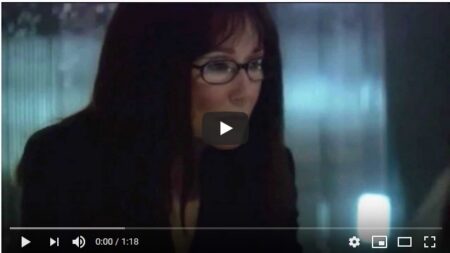
Fig. 03: ‘I’m coming for all of you!‘
What vibrates in the memory: music is one of the things that stays with you even after having watched the entire series, particularly its percussion and, most strikingly, the duduk. There are, of course, several brilliant TV soundtracks, but very few have reached the range of genre and tonality that Bear McCreary’s sublime score encompassed: from the epic to the numinous, from the sensual to the tribal, drawing on classic as well as hard rock music. Never before had we watched spaceship battle scenes whose soundtrack was not triumphalist but mournful.
What hasn’t aged well. Cylon number Six’s (Tricia Hellfer) soliloquies on God always seemed a bit too preachy and then the religious references only multiplied, with prophecies, angels, visions and messiahs increasingly overpopulating the plot as it drew to its conclusion. The resolution of ‘Starbuck’ Kara Thrace’s (Katee Sackhoff) storyline in particular was rather disappointing in this respect. What is more, the series enacts a gradual transition from pagan polytheism to Judeo-Christian monotheism that never went down well, especially in a series that was very directly pitched as a post-9/11 text.
What is most relevant to us today. Gaius Baltar.
Charming but dangerous, funny but self-absorbed, amusing yet cowardly: superbly performed by James Callis, the story of this ruthless buffoon who ended up a President responsible for the death of thousands has a different resonance in the days of Donald Trump, Boris Johnson and Covid-19.

Fig. 05: ‘How do we measure loss?‘
The above scene starts with Didi Cassidy (Chelah Horsdal) reading out numbers of deaths and survivors, something that Madame President also does in quite a few scenes scattered throughout the entire series. Today’s viewers will recognise in these scenes an act that, in the midst of a global pandemic, has become a habit that is too much a part of their everyday life, as they check daily updates of infections, fatalities and recoveries.
In this sense, in 2020, scenes like these are more relevant to us than ever.
Aris Mousoutzanis is a Principal Lecturer in Film & Screen Studies at the University of Brighton. He teaches and researches on popular genre (science fiction; Gothic/horror; (post-)apocalypse; utopia/dystopia); trauma theory and memory studies; media, imperialism and globalisation. He is currently working on a project on utopia and biopower and one on media and nostalgia.
P.S.: So, what was the Plan? Perhaps it’s best to end with the answer to a question that has puzzled fans for years. The ‘precap’ of every episode repeatedly teased viewers that the Cylons ‘look and feel human. And they have a plan’. But it never became clear what that plan was. The 2017 reunion below will be an utter joy in its entirety to any dedicated fan, but we also finally get the answer to this question from Moore himself:
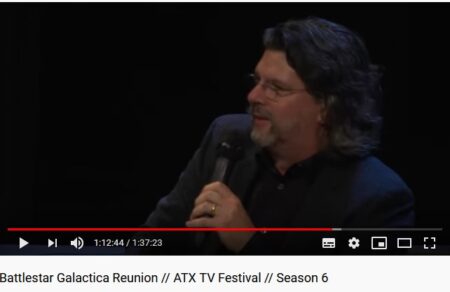
Fig. 07: ‘There is no frakin’ plan!‘


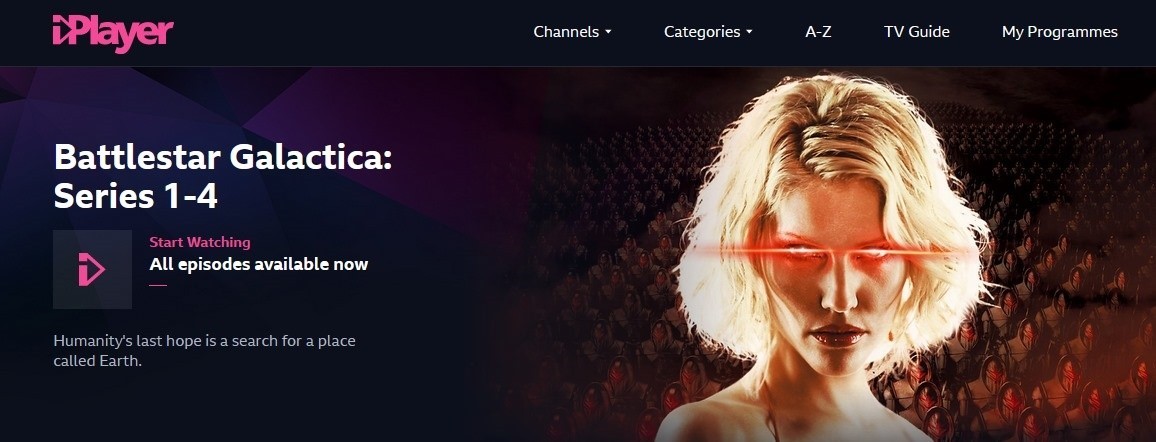


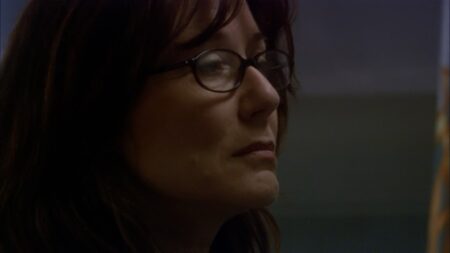
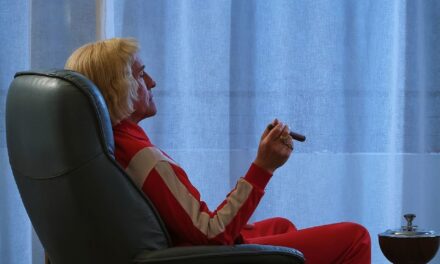



What a great piece Aris! And so well-timed for my wife and myself because we’re currently watching ‘new’ “Battlestar Galactica” for the first time on BBC Two and rather enjoying it. Makes us even more keen to experience the rest of it now! Much appreciated! 🙂
All the best
Andrew
Thank you, glad you liked. Enjoy the journey!